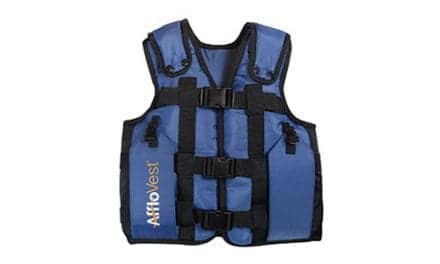RT consulted with leading device manufacturers about how today’s airway management technology plays a role in preventing infections and improving outcomes for intubated patients.
Proper management of the airway is essential in the fight to reduce and prevent infections and complications related to intubation and ventilation. To learn more about how today’s airway technology plays a role in fighting infections, RT interviewed representatives from Halyard Heath, Mercury Medical, and Pulmodyne Inc. Contributing to this month’s discussion were:
- Kim Appel, MS, CCC-SLP, clinical specialist, Pulmodyne Inc, with Emily M. Gahr, Product & Marketing manager, Pulmodyne Inc;
- Capt Steve LeCroy (Ret), MA, CRTT, EMTP, clinical manager, National Products, Mercury Medical; and
- Quincy R. Weatherspoon, director of Marketing, North America Core Medical Devices, Halyard Health.
RT: Tell us about your company’s most recent intubation and airway management products. What are the most common concerns you are hearing from clinicians who manage intubated patients and how are your products helping to address these concerns?

Emily Gahr, Pulmodyne
Emily Gahr (Pulmodyne): Our newest product, which will be released in late 2016, is our Control-Cric, which is an emergency cricothyrotomy device. Our product offers a Cric-Knife with dual sided blade, and an integrated sliding trach hook. The sliding trach hook helps to maintain the stoma while securing the Cric-Key. Our Cric-Key is a cricothyrotomy tube fit over an introducer. The introducer is shaped to provide tactile feedback of tracheal ring location. Once location is verified, push the introducer and tube into the stoma, remove the introducer, and secure the tube with the trach ties. Cricothyrotomies are a last resort in saving a patient, which means they are not commonly performed. Our product reduces steps, and helps to provide control in an emergent, stressful, situation. Because it allows emergency physicians and technicians to more quickly and easily secure the airway, this device will be a true life-saver.
Capt Steve LeCroy (Mercury): Two products that are getting great reviews from clinicians is the new air-Q sp Blocker Laryngeal Mask Airway and the naso-flo nasopharyngeal airway. The air-Q sp Blocker is not any old LMA. Dr. Cook, the inventor of the air-Q, added some innovative features that makes the air-Q sp Blocker not only a good rescue airway, but a good everyday airway. For example, the air-Q sp Blocker self inflates when the patient is ventilated removing the need for a syringe to inflate the bowl, the device has a channel for a gastric tube and can also be used as a conduit for intubation and is the only 0.5 LMA available. One of the big concerns I hear is when a patient is brought into the ER by EMS and the patient has an extraglotic airway in place and the doctor wants the patient intubated. The problem is how to remove the extraglotic airway without the patient vomiting and aspirating? The air-Q solves that problem. The patient can be intubated with the air-Q in place and then with a specially designed removal stylet the air-Q can be removed without ever exposing the patient’s airway. That’s a huge advantage. Equipment used by EMS should not make the ER’s job harder.

Quincy R. Weatherspoon, Halyard Health
Quincy R. Weatherspoon (Halyard): Halyard Health’s Microcuff Subglottic Suctioning Endotracheal Tube (ETT) combines effective subglottic suctioning with advanced Halyard polyurethane cuff technology to provide protection against microaspiration. Using an inferior subglottic suctioning ET tube can cause clogged lumens, making it difficult to clear out using air bolus. Microcuff’s integrated rinse port creates a closed suction system, enabling the safe use of saline rinsing to effectively clear clogs while preventing cross-contamination to both caregivers and patients.
Some of the most common concerns that we are hearing from clinicians who manage intubated patients are:
1) The need for better fit and seal: Maintaining a consistent seal at the cuff is critically important, as it reduces the risk of microaspiration of secretions which can lead to ventilator-associated pneumonia (VAP). The ultrathin polyurethane high-volume, low-pressure (HVLP) cuff of the Microcuff ET tube is a recent innovation that reduces the potential for folds in the cuff, therefore reducing the risk of microaspiration.
2) Reducing the risk of tracheal trauma/seals at lower pressures: The Microcuff line of endotracheal tubes features a polyurethane (PU) cuff seals at lower pressures when compared to conventional PVC cuffs, thus reducing the risk of tracheal trauma challenges presented by clogged lumens. In recent years, clinicians have been adopting industry guidelines from the Centers for Disease Control and Prevention (CDC), American Thoracic Society (ATS), and others in the industry encouraging use of subglottic suctioning ETTs. But a continued challenge is clogging of subglottic suctioning lumens. This prevents effective suctioning, leading to the accumulation of subglottic secretions and increased risk of microaspiration and ventilator-associated pneumonia (VAP).
The Microcuff Subglottic Suctioning ETT has a better seal that enables the safe use of saline rinsing to effectively clear clogs, which is more effective than air bolus at loosening and clearing clogged suction lumens. Additionally, the Microcuff suction valve with integrated rinse port enables both suctioning and saline rinsing, without opening the suction circuit, preventing cross-contamination to both caregiver and patient.
RT: How does management of pediatric and neonatal airways differ from adults and what considerations must clinicians take into account when treating this population? What factors do manufacturers most consider when designing pediatric and neonatal airway products?

Capt Steve LeCroy (Ret), MA, CRTT, EMTP, Mercury Medical
Capt LeCroy: For me the big difference is the lack of opportunity to manage pediatric and neonatal airways. Unless you work in the NICU or L&D, the opportunity to place an advanced airway in this age group is pretty rare. I think psychologically it’s different. Give the average RT a 60-year old patient with an airway issue and it’s no big deal, but make it a six-minute old, premature neonate and see what happens.
I think clinicians have to take into account the old adage that infants and neonates are not just little adults. For example, intubating a newborn with a curved blade or hyperextending the head could make things worse; both techniques are common for adults but create problems when treating neonates. As far as design considerations, let me use air-Q as an example. When Dr Cook was developing the 0.5 air-Q, he said you can’t just take a larger air-Q and just make it smaller — the angles are different. So, taking into to consideration how the airway changes as a person grows is significant.
RT: Can you speak to the importance of cuff management for intubated patients and how maintaining the seal decreases the chances of microaspirations entering the lungs and potentially leading to VAP? How are today’s products improving cuff/tube management?

Kim Appel, MS, CCC-SLP, Pulmodyne
Kim Appel (Pulmodyne): It is well documented that cuff pressures fluctuate throughout the day and that many factors contribute to these pressure changes. Low pressures result in aspiration of secretions and possible under-ventilation, while high pressures can quickly result in tracheal ischemia, which leads to more serious airway complications. Maintaining appropriate cuff pressures is therefore unquestionably extremely important.
There are several products available including manual devices such as hand-held manometers as well as automatic monitoring via the Arm Medical “Pressure Eyes” (formerly Pyton). This device facilitates continuous cuff pressure monitoring and regulating, which may promote more consistent cuff pressure maintenance and thereby reduce microaspiration more effectively than intermittent monitoring. Additionally, suctioning-above-the-cuff can help reduce the quantity of secretions reaching the lower airways and help to promote lung health. There are several products available with this feature. Pulmodyne offers a subglottic suction line on the inner cannula of our Blom tracheostomy tube. This economical, novel design allows the suction line to be cleaned and flushed outside of the patient without re-introducing bacteria into the patient, or worse, having to change the entire airway when clogging occurs. Use of subglottic suction airways is an excellent adjunct to other infection prevention and cuff pressure monitoring measures.

naso-flo Nasopharyngeal Airway by Mercury Medical
Capt LeCroy: VAP is a huge problem for ventilated patients. It’s been my experience if the patient stays on the vent long enough they will develop some type of problem. Managing cuff pressures is often overlooked or not consistently checked. Too high of a pressure causes trauma to the tissue. I’ve had patient that have developed a fistula between the trachea and esophagus due to excessive cuff pressure making positive pressure ventilation with endotracheal tube almost impossible. Too low of a pressure and there is a possibility of an air leak effecting tidal volumes and the patient is prone to aspiration leading to VAP. Studies have shown even a properly inflated endotracheal tube cuff will allow the patient to aspirate through microaspiration around the cuff. So weaning patients off the vent as quick as possible is always a good idea.
Weatherspoon: Cuff management is important for intubated patients because the cuff is the primary defense against secretions that can filter into the lungs. Folds in high-volume, low-pressure (HVLP) cuffs can provide conduits for microaspiration and subsequent nosocomial infection. Maintaining cuff pressure and a good fit and seal over time is important for reducing the risk of ventilator-associated pneumonia (VAP).
Today’s products, such as our Microcuff technology, which feature advanced micro-thin PU, which aids cuff/tube management. This micro-thin PU is considerably thinner than the standard PVC used in conventional tube cuffs. It virtually eliminates the formation of channels typically found in PVC cuffs, as the PU folds over on itself and provides a superior tracheal seal, reducing the likelihood of fluid leakage of potentially infectious secretions.
RT: For long-term ventilation patients, what are some of the most important things clinicians can do to not only improve oral hygiene but prevent infections/damage to the skin? Also, what are your thoughts on the use of chlorhexidine?
Appel: When discussing skin breakdown, the most important concept here is prevention. Which means that all therapists must take responsibility for performing routine skin checks, keeping the stoma clean and dry, changing saturated bandages, advocating for suture removal once the airway tract is stable (per the physician), and participating in multidisciplinary team meetings where considerations such as patient nutrition and swallowing status can directly impact skin integrity. When encountering patients with breakdown, consulting the wound care specialist and having familiarity with the available treatments and barrier devices can help promote healing.
With regard to oral hygiene, clinicians need to remember, first and foremost, that many individuals requiring long-term ventilation are unable to brush their own teeth, and get regular dental cleanings to remove plaque and tarter buildup. These are the things that protect us most from cavities, and bacteria accumulating at the gum-line, and on the tongue, teeth and palate. Additionally, many have dysphagia, rendering them more susceptible to respiratory infections and less able to effectively swallow their secretions. Sadly, I have worked with patients with large amounts of dried secretions within the oral cavity or attached to the palate and uvula that other healthcare providers or family members have failed to see or remove.
Oral care should involve a multi-step process and be performed several times a day: checking the oral cavity, gums, hard palate, soft palate and uvula, using oral suction in the hypo-pharynx to remove secretions harbored there, and brushing teeth, or at the very least, cleaning with antibacterial agents like chlorhexidine. We should always strive to practice by evidenced-based medicine. But because studies take years to complete and publish, we sometimes put ideas into practice until they are either supported or refuted. While research in this area is still evolving, it is more than evident that oral care is of utmost importance in reducing respiratory infections. Therefore, my current feeling on chlorhexidine is that it is one more potential way to help decrease oral bacterial. In lieu of the very real concerns about growing antibiotic resistance in the general community and inpatient facilities, and the CDC recommendations that it be addressed by (1) reducing the overall number of antibiotics prescribed, and (2) inappropriate antibiotics being prescribed, infection prevention and oral care is a part of each and every practitioner’s job description.

air-Q sp (Self-Pressurizing) Masked Laryngeal Airways Disposable, by Mercury Medical
Capt LeCroy: Probably the most important steps to take is to get the patent weaned off the vent. When that’s not possible there is good evidence that providing oral moisturizing to the mucosa and lips as well as brushing teeth, gums and tongue to remove dental plaque helps prevent infections. Dental plaque is a great medium for bacteria growth. This is where nursing and respiratory need to work together. As far as the use of chlorhexidine research shows a reduction in colonization, however the length of stay or incidence of respiratory infections where not effected. I believe chlorhexidine should be part of an oral hygiene strategy for ventilator patients. I think the benefits outweigh any risk.
RT: Regarding intubation, what advantages do video laryngoscopes offer over direct laryngoscopy, both in clinical and pre-hospital settings, and do you foresee VL ever completely replacing DL?
Capt LeCroy: Video laryngoscopes have the advantage in either setting by being able to visualize the vocal cords with little to no manipulation of the head and neck and the ability to record the procedure. The negative with video laryngoscopes have really nothing to do with the device. First, they do take practice. Second, some VLs cause the clinician to change their technique, something some clinicians are not willing to do. If you try to use some VLs like a DL you will have problems. Cost is also a big issue for most EMS agencies. VLs can be pretty costly for the capital equipment and an ongoing cost for the disposable part. I see VLs taking over in the clinical environment, especially with the younger clinicians; old habits are hard to kill. As far as pre-hospital, when you compare the high cost of the VL and the introduction of better extraglotic airways, not to mention the scrutiny regarding pre-hospital intubation, I don’t see VL replacing DL in the field as a general rule.
RT: What advances and improvements do you foresee for products in the intubation/airway management sector in the next several years?

Control-Cric by Pulmodyne
Appel and Gahr: The healthcare community has seen both a clinical and a manufacturing focus on VAE reduction in recent years, which will undoubtedly continue. As will efforts to produce devices which enhance visualization during intubation and atraumatic placement. Additionally, patient and family satisfaction scores are now really beginning to affect care delivery.
At Pulmodyne, we are constantly working to develop and release new and innovative products. We believe that “airway management” is not just about accessing, and maintaining an airway. Instead, our mission is to design products which help clinicians do their jobs more safely, efficiently and precisely, while also reducing infection potential, improving secretion clearance, and promoting patient QOL whenever possible. Education and training are always instrumental to success. We have some exciting projects in the pipeline and look forward to sharing more details with Practitioners in the future.
Capt LeCroy: I think the biggest advancement will come in the video laryngoscope arena. I believe the prices will go down and the quality will improve. I think Bluetooth technology or something more advanced will come into play. For example what would like to have the video come up on google glass for the clinician to not only see, but to record and if it’s pre-hospital transmit the image to the ER. Mercury is always developing or searching for new products clinicians should check back with Mercury to see what’s new. RT










